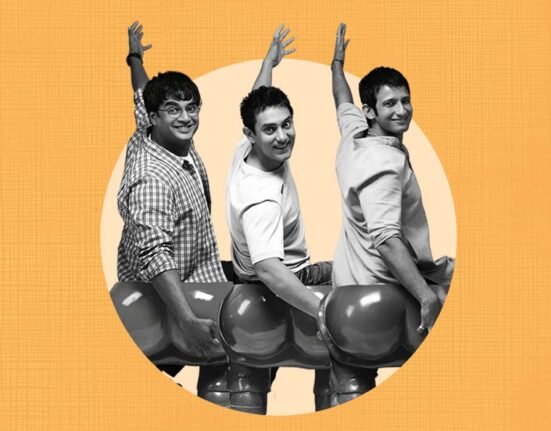Hedonic treadmill, So what it is? The term seems very puzzling itself. It is a reflection of an individual’s uncertain changes in moods. The level of happiness often changes after experiencing a positive or negative life event, but eventually, we tend to return to our baseline emotional state. So in an easy language, it is the way a person moves back to his more subtle emotional state after experiencing a surge of happiness or dreadfulness.
Not only in today’s world, but it has also been noticed since the very beginning of humankind, that people tend to chase material success, personal goals or experiences that fulfil the craving for happiness. Despite after having all of these things on the plate and checking the bucket list full, there is more satisfaction needed to be achieved and so, the pursuit of happiness remains anew. This is known as the hedonic treadmill. Let’s explore the psychological foundations of the hedonic treadmill, understand its concept, and see how it influences and shapes our lives.
Read More: Psychology behind Materialism: How money and happiness shapes individuals’ lives
What is Hedonic Treadmill
The term “hedonic treadmill” was first coined by Philip Brockman and Donald T. Campbell in 1971. It is a metaphor used to describe the surge and flow of emotions, such as happiness and sadness, experienced by an individual. It highlights how humans adapt to circumstances, whether positive or negative, and eventually return to their baseline level of happiness. This signifies that any event occurring around us is just a temporary phenomenon and we quickly revert back to our usual state of mind.
The term hedonic comes from a greek letter called hedone meaning pleasure. Therefore, the hedonic treadmill is a cyclical phenomenon of pleasurable experiences in an attempt to increase their happiness, but the effects of these pursuits are fleeting. The term is often referred to as hedonic adaptation.
Read More: The Psychology of Money and Happiness
The whole concept behind the Hedonic Treadmill
The psychology behind the hedonic treadmill is rooted in a manner called the hedonic adaptation. Hedonic adaptation refers to the quickly getting back to the baseline of emotions and regular well-being after experiencing a significant positive or negative event. The mind eventually adapts to these experiences, and when the cycles repeat, it remains at the baseline. This process allows the individual to adjust to their environment and accept the ups and downs of life.
Making the positive and negative events a part of life. The pursuit of happiness through external events and objects is not sustainable in the long term, as it teaches that lasting happiness comes from within.This phenomenon helps the individual attain happiness from within thus making him or her understand that external happiness could be temporary and eventually one will return to the normal level of happiness or emotions bit the inner pursuit of happiness could deliver a state of permanency as well as a good amount of not selling down slitty satisfaction.
Read More: Are Most of the Rich People Miserable?: Psychology Behind Wealth and Happiness
A similar pattern applies to negative events. It is important to remember that setbacks in life are not permanent. For example, if someone loses their job and feels completely distressed, over time, their sadness fades, and their happiness levels return to normal. This process resembles the tangent curve in trigonometry—if you know, you know.
Evidences of hedonic treadmill and why certain events are more prone to it !!
Numerous studies and research findings suggest that the hedonic treadmill and hedonic adaptation are fundamental aspects of life, helping individuals adjust to both challenges and moments of happiness. We may feel elated about the recent achievements but this surge is often short lived. Likewise we may experience sadness or frustration after a setback but it also tend to diminish over time and eventually a person comes back to reality and adapts the the situation keeping it as in memory and how to face it again if anything likewise happens.
For instance, a common life event such as moving to a new state or enrolling in a new course brings sudden changes, requiring adaptation. One may initially feel a surge of happiness or even distress due to the transition. However, as time passes, these emotions fade, and the individual becomes accustomed to the new circumstances.
Studies suggest that when a person pursues material possessions or achievements solely out of admiration for what others have, the resulting happiness tends to fade quickly. It swifts by as it is not a part of inner happiness. Thus if you have attained something for the sake of self then the happiness and the adaptability to the situation is longer than the previous case. It concludes that the reason behind it is necessary as well as own sentimentality plays an important real to it .
The pursuit of a long term happiness
The whole concept of recent pleasures and hedonic treadmill states that the idea of external and materialistic happiness is fleeting and swifts by time quite vastly. There are certain ways one can do to achieve inner satisfaction as well as happiness for a long run. It is important to keep it in mind also that not all type of happiness are transient. There are strategies adopted by individuals just to break free themselves from the cycles of pursuits of constant transient pleasure.
- Nurturing the heart and practising mindfulness
- Gratitude practice
- Fostering good and healthy relationships
- Focusing on own happiness and internal drive
- Engaging themselves in meaningful and fruitful activities
- Meditation
- Practicing more of eudaemonic well being
- Lastly do what you love
The bottom line either that hedonic treadmill is a metaphor used for the human tendency to pursue pleasure one after the other in a cyclic manner . Hedonic treadmill makes ones understand to look forward to more of inner happiness and satisfaction rather than just switching and getting hold of the transient form of happiness .
FAQs
1.What is the Hedonic treadmill theory ?
It is a psychological theory based on the tendency to pursue happiness in a temporary manner . Where human tend to return back to normal state of emotions after a sudden surge of happiness or sadness .
2. What is Eudaemonic treadmill ?
Eudaemonic treadmill is again a psychological theory based on happiness and flow of emotions where an individual achieves happiness by self realisation and by his or her own actions finding a state of satisfaction
3. Is hedonic treadmill good or bad ?
It can be good or bad depends on the circumstances and how aprons particularly perceives it.
4. how to avoid Hedonism ?
One can avoid hedonism by defining the owns purpose towards life and engaging oneself in meaningful activities
References +
- Pilat, D., & Krastev, S. (2024, September 23). Hedonic Treadmill. The Decision Lab. https://thedecisionlab.com/reference-guide/psychology/hedonic-treadmill
- Mfa, R. J. S. (2020, October 2). What to know about the Hedonic Treadmill and your happiness. Healthline. https://www.healthline.com/health/hedonic-treadmill













Leave feedback about this